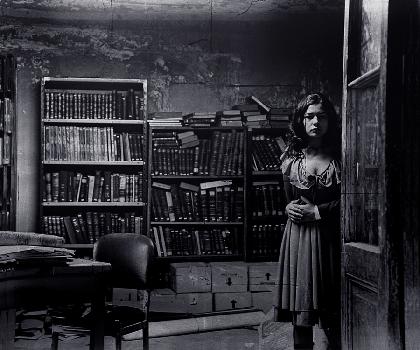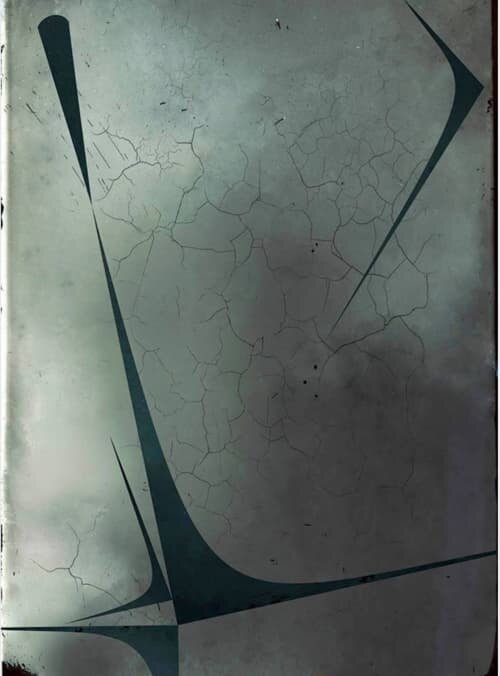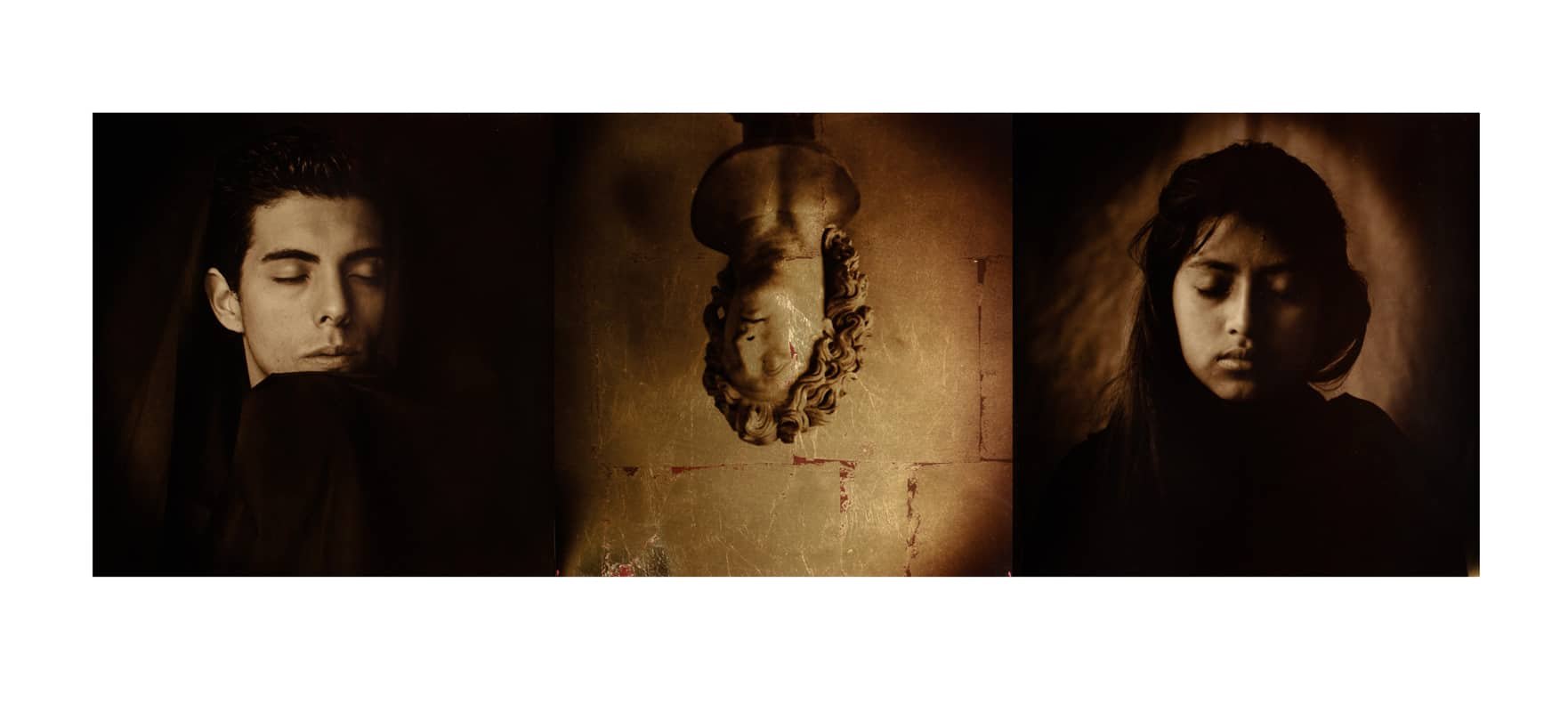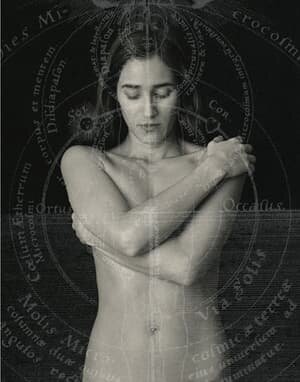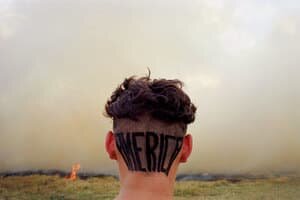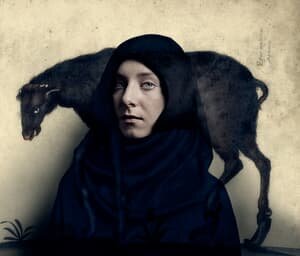About Luis González Palma
Luis González Palma’s work has evolved dynamically yet harmoniously through time. The works discussed here is not an all-inclusive representation of all bodies of work, rather touches on a wide breath of a three decade long career. From this sample, patrons may appreciate González Palma’s ongoing study of perception- the gaze and existence- as experienced through personal and universal sensory experiences.
González Palma’s choice of material is various and deliberate. It sharpens the potency of his artistic concept. Concerns with material, space, and light likely root to his formal training. González Palma studied architecture at the Universidad de San Carlos de Guatemala. Primarily celebrated for his work as a contemporary photographer, González Palma is more truthfully something more complex- an artist who uses photography, or perhaps a philosopher whose study employs visual language.
Heroé
González Palma’s early work, Obras (1989 - 2012) was striking and memorable portraits of Myan descendants living in Guatemala. This is where sensibilities and the implication of the gaze most directly, literally, and fundamentally is establish in the work. The glaring white eyes of González Palma’s subjects seem to leap out at us from prints that were otherwise completely stained by a tinted wash painted over the black and white photographic print. A palpable human connection is apparent in the lock of their gaze with ours. We are implicated by the quiet stare of their haunting eyes.
The subjects appeared most significantly in portrait-grids, La Loteria I and La Loteria II, that featured Myan and Mestizo subjects with other loaded Christian symbols- roses, thorns, fish, crowns, among them. La Loteria is direct reference to the bingo-like game played by wealthy “New World” colonizers. The game, also used to teach the Spanish language, remains common at fairs or children’s parties. Reappearing recognizable figures recall spiritual, celestial, and popular references: angels/wings, devils/horned creatures, sun, moon, stars, and performer-heroes like harlequins, clowns, ballerinas, soccer players and wrestlers. This process was an early experimentation and indication into what has became an increasingly hybridized process. Symbolism also anchors the work and helped allow the artist to elaborate a personal visual lexicon of signifiers.
Borrowing from known religious and “popular” symbols and art historical references the Artist both roots and liberates the particulars of his images. Themes of life and death, chance and fate are invoked. Through the use of such loaded social-cultural references the Artist’s work allows for a stretching of metaphor. Life is performance. The world is our stage.
Jerarquías de Intimidad | Hierarchies of Intimacy
Variation 2, 2007
González Palma’s sculptural treatment of photographs remind us that the image is an object and that only the most sacred things bear the marks of their owner’s touch. The contemporary artist is known to tear, fold or cut his prints, even more recently to use the silver-scrapings from old negatives to make new work. Acrylic paint was used in early photo-collage works as were personal and sensitive “original documents” (missing-person’s notices, headshots, death certificates, book pages, sheet-music, and the like).
The color red also appears and reappears running through González Palma’s works like a bloodline. When it appears it acts as a sculptural hinge of in the image-construction. In early days, the artist used red thread, string, and ribbon. Later he would go on to include embroidery needlepoint, and beads. Red paper became the substructure of works with gold leaf and kodalith embedded in resin. Working with photography as sculpture enhances the metaphysical and emotional qualities of the image. It has a body, a physical presence itself. We find this pushed further through more recent works on silk, felt, or catoptric anamorphic work.
González Palma has discontinued making new photographs in a greater quest to understand the deepest levels of truth, reality, and existence. He has chosen to work exclusively with existing images. New and ongoing investigations draw from his own archive and from public collections. The emerging work is more abstract and theoretical. Movements in this direction initiated in Möbius.
Möbius by Luis González Palma
Möbius began in 2013 and is fluid. It is “a sensory contemplation” in which González Palma delves into other ways of creating and understanding photography. This first began with re-contextualizing his own visual lexicon, revisiting his own images and integrating them with abstractions. Abstract elements are rendered in acrylic paint, gold leaf, or more sculpturally with prints on felt held up by plexiglass with geometric paintings. González Palma describes it as creating “new symbolic meanings, new arguments, possibilities and visual associations between both forms of artistic representation, between emotional and reason, painting and photography, allowing ambiguous works and new stories, both aesthetic and political” to unfold.
Perhaps more loaded are González Palma’s contemporary artwork that draw on public archives. These works in particular employ more direct methods of translation to materialize aspects of the phenomenological world. The moody Hesiquias series present “empty” portraits made by removing the subject in original images by Juan José de Jesús Yas, Guatemalan - Japanese photographer that have been drawn from the archive of photos at the Center for Regional Research in Mesoamerica (CIRMA) in Antigua, Guatemala. Hazy atmosphere of the original ambrotype and the marks of time are all that remain of what were once portraits of religious colonials.
Haikus is a series of digital geometric drawings on fragments or residues of other images and establishes a dialogue between geometric abstraction and expressionist abstraction, giving rise to new images with particular geography and visual sensations. The three-part Koan series reinterprets photographs taken by the Astronomical Observatory of Córdoba, Argentina. In Astrofotografía collages with photographs of comets, the moon, and solar eclipses are printed on translucent onion paper. In Spectra abstract images made from spectral lines are printed on rice paper. In Cosmic Dust geometric drawings based on cosmic ray frame. These works explore and reflect on the notion of infinity and the search for an origin. Musica Callada | Silent Music used moonlight to print sunspot images pulled from the NASA archives.
Haikus by Luis González Palma
Collaborative audio and video works have been powerful additions to González Palma’s oeuvre. Un Timpano Infinito – Atlas (listening to the stars) is the result of a collaboration with artist Sebastian Szyd, astronomer Armando Mudrik, and the Library of the Astronomical Observatory of Cordoba. Together artists and astronomer translated the star-map of the night-sky at Cusco on the winter solstice onto a scroll of paper that can be played by a small musical device.
. . . Una Isla Hecha de Agua | . . . An Island Made of Water by Luis González Palma
“December 23 (for my mother), 2023
150X155cm Print on onionskin paper, red threads, collage
In . . . An Island Made of Water the artist began with ID photographs of the family- his mother, father, and maternal uncle. Hundreds of images of each "family album" memento were made using an electronic microscope. The final pictures, printed on onionskin paper, were reorganized from a different perspective. Invisible rituals of use and caress become more visibly evidenced. The picture's surface harbors a mystery- the memory of our bodies.
A significant name in contemporary Latin American Art, Luis González Palma is in numerous public and private collections around the world: Art Institute of Chicago; Smithsonian Institution, Washington; The Bronx Museum; Berlin Museum; Centro Cultural de Arte Contemporánio, Mexico City; Centro de Artes Visuales, Asunción; Fine Arts Museum, Taiwan; Fond National d'Art Contemporaine, Paris; High Museum of Art, Atlanta; Israel Museum of Art, Jerusalem; LA County Museum, Los Angeles; Museo de Bellas Artes, Buenos Aires; Houston; Scottsdale Museum of Contemporary Art; Cleveland Center for Contemporary Art; and Kiyosto Museum of Photographic Arts, Japan, among them.







